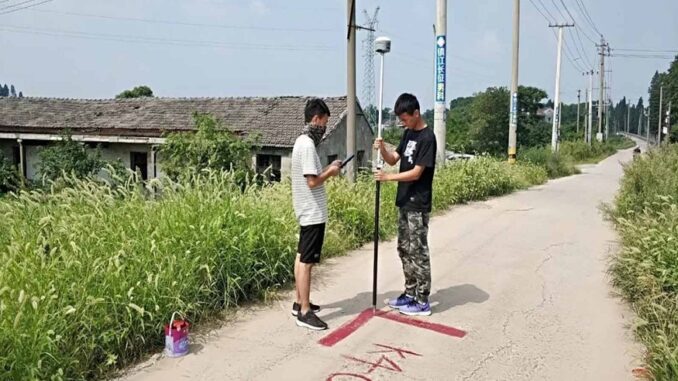
During a survey, drones collect geographic data and photos. GCPs (Ground Control Points) are referred to as physically defined points with a known coordinate, which is visible in the pictures.
After a flight, a software processor turns geodata and pictures into digital elevation models, 3D models, orthomosaics, and other outputs.
Basically, a control point survey ensures the accuracy of those mentioned outputs by linking the longitude and latitude of points in a picture to actual GPS coordinates on the job site ground.
But there are certain factors, which impact the accuracy of control point surveys. Some of these factors are not limited to the following:
1. Terrain and Weather
Terrain and weather may adversely impact field surveys. The electro-optical and optical instruments can be reduced severely by ground haze, mist, fog, or smog. A swamp sand floor plain under high water may impede all the leveling operations.
Signals from GPS devices need a clear line of sight in the sky. Forested and urban areas may deflect or mask direct signals, which are required for accurate measurements. Proper planning and good recon will alert every field manager of the best methods to use.
2. Mission Parameters
If a contract needs a particular level of centimeter accuracy, you might want to think of a few mission parameters in order to achieve it. Image overlap, altitude, and image resolution should be part of the process when coming up with accurate maps.
In other words, higher resolutions can produce better data. In order to achieve this, you will need to use cameras with higher pixel resolutions. The minimum required resolutions can be 12 or 20 megapixels.
The altitude you fly and camera resolution strongly impact the accuracy of control point surveys. If you decide to fly higher, you may cover a larger area in less time. Though this will interfere with the accuracy.
On the other hand, flying lower may take longer, but it will improve the results significantly. For that reason, flowing lower is a perfect option to improve control point surveys.
3. Angles
Objects and points, which appear on pictures with a low subtended angle have a lower accuracy when compared to points on photographs that are close to 90 degrees apart.
Ensuring the camera position has a perfect spread may provide better results. For a project with a low angle between pictures, like SmartMatch and UAV projects, it is the angle across multiple pictures, which affects the accuracy of control points.
4. GCP Collection
You can obtain a GCP in different ways, such as from existing archives of features with a known coordinate, reference map, or ground survey.
During control point surveys, identifiable features are surveyed to get a precise coordinate. The location will be at any point on the job site, which can be identified accurately at the resolution of a raw image.
Results from a completed survey and publicly available data, like airport runway coordinates, will also be used for a GCP collection.
Closing Remarks!
Deploying GCP targets on accurately coordinated GCPs before UAV LiDAR surveys gives assurance that a survey has been executed properly. So adopting GCP targets will be a surefire way to ensure post-processing is simplified in a survey.

Leave a Reply
You must be logged in to post a comment.